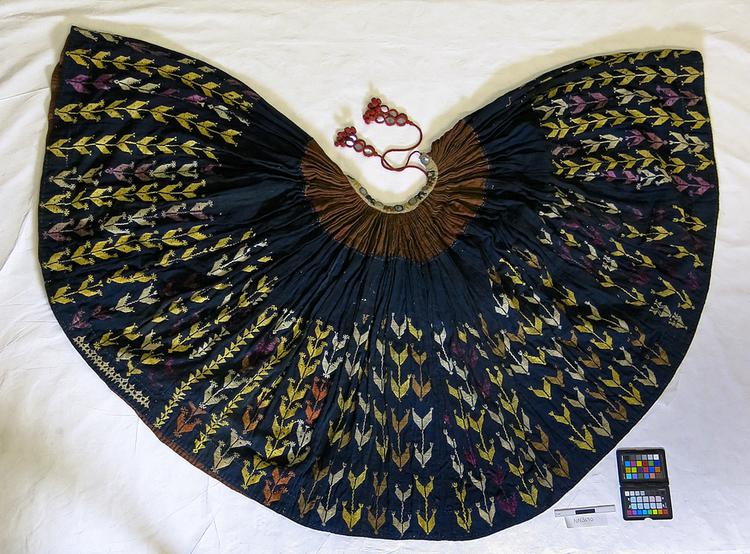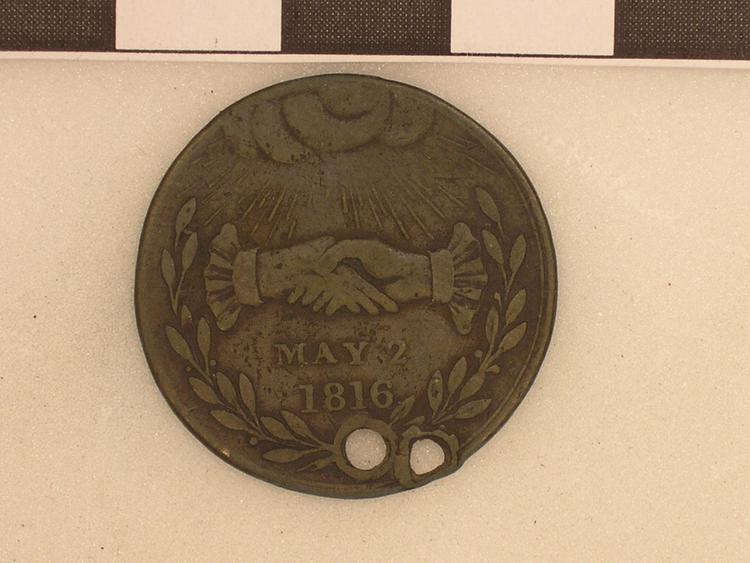Carved wooden sculpture entitled 'Basket Weaver', made from purpleheart wood (Peltogyne sp.) by the artist Oswald Hussein. A plinth supports a stylised figure of a standing woman, carved with emphasis on the profile, made from a dark wood. There is grass or plant fibre wrapped around the legs of the woman and a small grass skirt tied around her waist. Two strings of plaited knotted grass or fibre are attached above the breasts, possibly as arms, and there is another length of fibre wrapped round the neck. The face is pronounced and in profile, with white stone pieces for eyes, and earrings made of incised pottery hung on strings on which red, black, white, and yellow beads have been threaded. Above the head there are further curves, possibly representing hair or a headdress.
The title 'Basket Weaver' refers to a local tradition of weaving that is prominently a women's undertaking in many Amerindian cultures. The women use tibisiri fibres to make baskets. The carving shows a woman in her dance attire for the MariMari, a special Arawak dance that is performed during the Mashmarani festival, which is held annually in September to celebrate the Amerindian month. The spirits of the basket weaver inspired this piece of work. Oswald has said that: 'The spirit kept coming to me to do the carving. As I started the carving she came in it. As you go on you keep on carving her and carving until you complete the correct image.' The carving, in its wider context, celebrates women weavers and their weaving activities.
The title 'Basket Weaver' refers to a local tradition of weaving that is prominently a women's undertaking in many Amerindian cultures. The women use tibisiri fibres to make baskets. The carving shows a woman in her dance attire for the MariMari, a special Arawak dance that is performed during the Mashmarani festival, which is held annually in September to celebrate the Amerindian month. The spirits of the basket weaver inspired this piece of work. Oswald has said that: 'The spirit kept coming to me to do the carving. As I started the carving she came in it. As you go on you keep on carving her and carving until you complete the correct image.' The carving, in its wider context, celebrates women weavers and their weaving activities.
































































































































































































































































































































































































































































































































